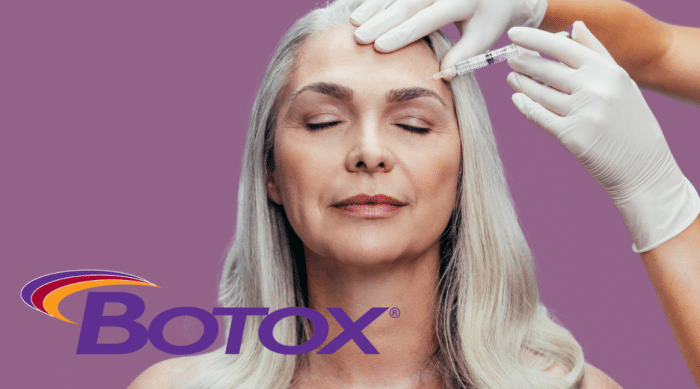
Botox FAQ: Answering Your Most Common Questions
David Fuller
Last Updated On: August 15, 2024
According to the Mayo Clinic, Botox injections serve purposes beyond cosmetic enhancements. Botox treats various medical conditions by blocking nerve signals to muscles and preventing their contraction, such as cervical dystonia, muscle spasms, lazy eye, excessive sweating, chronic migraines, and overactive bladder symptoms.
The versatility of Botox underscores its significant potential beyond aesthetic improvements. Supported by extensive research and numerous clinical trials, the use of Botox for a broad spectrum of treatments has been consistently validated for its safety and efficacy. Individuals considering Botox are encouraged to delve deeper into the subject to make informed decisions.
This article aims to illuminate Botox’s multifaceted roles, exploring its cosmetic applications and impact on enhancing the quality of life for patients with various medical issues.
Key Takeaways
- Botox serves cosmetic purposes and treats multiple medical conditions by blocking nerve signals to muscles, showcasing its versatility and effectiveness beyond aesthetic enhancements.
- It is generally safe with minor side effects, but serious complications, though rare, can occur and require immediate medical attention.
- Ideal candidates for Botox are adults seeking to reduce facial wrinkles or treat specific medical conditions, with considerations for age, health status, and realistic expectations.
- Botox effects start within 1 to 3 days after injection, with results typically lasting 3 to 4 months. When administered correctly, Botox can appear natural.
- Beyond aesthetics, Botox treats conditions like cervical dystonia, muscle spasms, excessive sweating, and more, demonstrating its broad therapeutic potential.
- Where we delve into the query “Botox: How quickly does it work?” Discover insights on the timeline for Botox’s effectiveness, shedding light on when to anticipate noticeable results after treatment.
Understanding Botox
What is Botox?
Botox is a neurotoxic protein derived from the bacterium Clostridium botulinum. It consists of a heavy chain (H) and a light chain (L) linked by a disulfide bond. The heavy chain binds to the nerve terminal. In contrast, the delicate chain cleaves the SNAP-25 protein, inhibiting neurotransmitter release and leading to muscle paralysis.
How Does Botox Differ from Other Cosmetic Treatments?
Botox is unique in its approach to reducing wrinkles and treating various medical conditions by temporarily paralyzing muscles. Unlike dermal fillers or surgical interventions, Botox works by blocking the nerve signals that cause muscle contraction, leading to a relaxation of the muscles and a reduction in the appearance of wrinkles.
What Are the Mechanisms of Action Behind Botox Injections?
The mechanism involves Botox binding to nerve terminals and preventing the release of acetylcholine, a neurotransmitter responsible for muscle contraction. Botox temporarily relaxes the targeted muscle by inhibiting this release, reducing wrinkles, and treating conditions like muscle spasms and excessive sweating.
Determining Candidacy for Botox
Who Are the Ideal Candidates for Botox Treatments?
Ideal candidates are adults seeking to reduce the appearance of facial wrinkles or treat specific medical conditions like migraines, muscle spasms, or excessive sweating. Candidates should have realistic expectations and be in good general health.
What Age Considerations Exist for Botox Suitability?
While there is no definitive age to start Botox treatments, individuals typically begin in their mid to late 30s to early 40s to address signs of aging or when wrinkles become noticeable. The timing can vary based on personal aesthetic goals and the onset of visible aging signs.
How Do Preexisting Medical Conditions Affect Botox Eligibility?
Individuals with neuromuscular diseases, pregnant or breastfeeding women, and those allergic to Botox ingredients are generally advised against Botox treatments. A thorough medical history and consultation with a healthcare provider are essential to determine eligibility and minimize risk.
Safety and Side Effects
What Is the Safety Profile of Botox?
Botox is generally considered safe when administered by a qualified healthcare professional. The most common side effects are minor, including bruising, pain at the injection site, flu-like symptoms, headache, nausea, redness, and temporary facial weakness or drooping. It is rare, but possible, for the toxin to spread beyond the treated area, potentially causing more severe symptoms.
What Common Side Effects Can Occur with Botox?
Common side effects include:
- Pain, swelling, or bruising at the injection site.
- Headache or flu-like symptoms.
- Droopy eyelids or crooked eyebrows.
- A crooked smile or drooling.
- Watery or dry eyes.
These effects are typically temporary and resolve on their own.
What Are the Rare but Serious Complications of Botox?
Although rare, complications can include muscle weakness, vision problems, difficulty talking or swallowing, breathing difficulties, allergic reactions, and loss of bladder control. These symptoms can arise hours to weeks after the procedure and require immediate medical attention.
Botox Treatment Insights

How quickly does Botox start to work after injection?
Botox typically begins to show effects 1 to 3 days following injection, with the full extent of results becoming evident within a week or more. It is generally recommended to have follow-up injections every 3 to 4 months to maintain the results.
How Long Can One Expect Botox Results to Last?
Botox results typically appear within 1 to 3 days after treatment, with full effects visible within a week or more. The duration of the effects can vary, but they usually last 3 to 4 months. Regular follow-up injections are necessary to maintain the desired results.
Can Botox Results Appear Natural?
When administered correctly by an experienced practitioner, Botox can produce natural-looking results. The key is to target specific muscles responsible for wrinkles while preserving the ability to make natural facial expressions.
What Factors Influence the Duration of Botox Effects?
Several factors can influence how long Botox effects last, including the individual’s age, the area treated, the dosage used, and the individual’s metabolic rate. Physically active people may metabolize Botox faster, leading to a shorter duration of the effects.
What are the differences between Botox and Profhilo?
Botox vs Profhilo – Botox primarily targets wrinkles by relaxing muscles, while Profhilo is a hyaluronic acid-based treatment that improves skin hydration and elasticity. Botox provides temporary results lasting several months, whereas Profhilo offers longer-lasting effects, often up to six months or more. Depending on your specific concerns and desired outcomes, your healthcare provider can help determine which treatment is best suited for you.
Botox Beyond Aesthetics
What Medical Conditions Can Botox Treat?
Botox is used to treat various medical conditions, including neck spasms (cervical dystonia), other muscle spasms, lazy eye (strabismus), excessive sweating (hyperhidrosis), migraine headaches, and overactive bladder. Additional conditions include crossed eyes, eyelid twitching, pediatric and adult spasticity, blepharospasm, back pain, neck pain, jaw pain, nerve pain, sciatica pain, neuropathy, pelvic pain, chronic myofascial pain, osteoarthritis, joint pain, and TMJ pain.
Are There Any Off-Label Uses for Botox?
Yes, Botox is also used off-label for treating conditions such as back pain, neck pain, jaw pain, nerve pain, sciatica pain, neuropathy, pelvic pain, chronic myofascial pain, osteoarthritis, joint pain, and TMJ pain. These uses demonstrate Botox’s versatility in pain management by blocking nerve signals to relax muscles and alleviate pain.
How Has Botox Been Integrated into Therapeutic Treatments?
Botox has been integrated into treatments as a non-surgical option to manage various conditions, particularly muscle contractions and nerve pain. By blocking nerve signals, Botox helps relax muscles and relieves chronic migraines, muscle spasms, and different types of pain.
Choosing a Botox Provider
How Do You Select an Experienced and Qualified Botox Provider?
Select a provider who is licensed and skilled in administering Botox injections. Referrals from your primary care provider or seeking professionals with specific dermatology or cosmetic surgery training can also guide your choice.
What Criteria Should Be Considered When Choosing a Botox Practitioner?
Consider the practitioner’s qualifications, experience, and training in Botox injections. It’s important to ensure they are licensed healthcare providers with expertise in the specific areas you seek treatment.
What Questions to Ask During Your Botox Consultation?
Inquire about their experience, specific training in Botox injections, potential side effects, what to expect during and after the procedure, and how often you might need retreatment. Also, discuss any medications you’re taking that could affect the procedure or increase the risk of bruising.
Financial Considerations
What Are the Cost Factors Associated with Botox Treatments?
The cost of Botox treatments varies based on the number of units used, the area being treated, and geographic location. Providers set their prices, so it’s essential to consult with your provider for an accurate estimate.
Are there Insurance Coverage or Financing Options for Botox?
Insurance coverage for Botox varies. Treatments for medical conditions like migraines or urinary incontinence may be covered, but cosmetic uses typically are not. Check with your insurance provider and ask your healthcare provider about any available financing options.
How to Budget for Your Botox Treatments?
Consider the frequency of treatments needed to maintain results, usually every three to six months. Plan for the long-term cost of regular sessions and inquire about any available packages or discounts for recurring patients.
Aftercare and Maintenance
What Post-Treatment Care Is Recommended After Botox?
To reduce bruising, avoid blood thinners and alcohol around the treatment. Post-treatment, avoid putting pressure on the treated area and don’t lie down for 4 hours. You may experience minor swelling and tenderness.
What Activities Should Be Avoided Post-Botox?
Avoid strenuous activities and exercise for 24 hours to prevent bruising and swelling. Also, avoid sun exposure until redness and swelling subside, and always apply sunscreen SPF 30 or higher.
How to Maintain Botox Results for Longer Durations?
To maintain results, follow all aftercare instructions carefully, use makeup cautiously after treatment, consider using cold compresses for swelling, and ensure a follow-up for potential touch-ups. Keeping up with regular treatment sessions as advised by your provider will also help maintain the results.
Conclusion
Botox represents a multifaceted treatment option that transcends its common association with cosmetic enhancements. Its capacity to address various medical conditions underscores its value in therapeutic contexts. With a strong safety profile and relatively minor, manageable side effects, it offers a viable option for individuals looking to alleviate specific medical symptoms or achieve aesthetic goals.
However, potential candidates must consider their health status, have realistic expectations, and choose experienced providers to ensure safety and effectiveness.
References
Mayo Clinic. (n.d.). Botox injections. Retrieved from https://www.mayoclinic.org/tests-procedures/botox/about/pac-20384658
University of Utah Health. (2019, November). The basics of Botox: What to know before your first shot. Retrieved from https://healthcare.utah.edu/healthfeed/2019/11/basics-of-botox
American Society of Plastic Surgeons. (n.d.). Botulinum toxin risks and safety. Retrieved from https://www.plasticsurgery.org/cosmetic-procedures/botulinum-toxin/safety
Cleveland Clinic. (n.d.). Botulinum toxin injections. Retrieved from https://my.clevelandclinic.org/health/treatments/8312-botulinum-toxin-injections
Products
Cart
Log In
Newsletter
Subscribe for exclusive offers and updates on new arrivals
Share feedback at:
Working Hours
MON - SUN 9AM to 6PM EST
The Most Popular Brands
Med Supply Solutions
Support
Secure checkout is guaranteed with full adherence to PCI DSS payment standards.
Products listed here are guaranteed authentic and manufacturer-sourced.
Pay easily with trusted providers


Copyright 2025. Med Supply Solutions